 Andy Graham with his children Phoebe, Patrick and Edward
Andy Graham with his children Phoebe, Patrick and Edward
Finding a premium market for Merino sheepmeat
Tapping into a processor’s value-based marketing program has given NSW sheep producers an increase of up to $1.50/kg for their lambs.
Fifth-generation sheep producer, Andy Graham, operates a mixed livestock enterprise near Gundagai in NSW with his father David and bothers Tim and Charlie.
The family enterprise has an Angus herd and a Merino flock (equally split between Merino and terminal joining). As sheep producers, the Grahams focus on supplying high quality lambs to the value-based marketing (VBM) program – Gundagai Lamb − at Gundagai Meat Processors (GMP).
A profitable market for Merino meat
During their first year with the Gundagai Lamb VBM, the Grahams supplied 2,500 Merino lambs. However, seasonal conditions mean that number could rise in 2025, with the business likely to sell more ewe lambs.
“We are paid premium dollar for Merino lambs with Gundagai Lamb while other processors might discount them because they prefer the traditionally desirable second-cross or first-cross Merino–Dorset or terminal Suffolk lambs,” Andy said.
That has resulted in real returns, with Andy estimating he receives around $1 to $1.50/kg more by supplying the Gundagai Lamb program.
Usual feedback
Andy said open and transparent communication was a hallmark of the program – through informal conversations with Gundagai Lamb and the feedback provided in his producer portal.
“I think most producers like receiving constructive feedback about their lambs and the advanced feedback we get from the Gundagai Lamb portal gives us another level of monitoring for animal performance and quality control,” he said.
While our flock management practices haven’t changed significantly, the feedback shows we’re chasing the right breeding criteria – such as lean meat yield (LMY) and intramuscular fat (IMF) – because our lambs have been a good fit with the Gundagai Lamb specifications from the start.
“Importantly, I think the feedback has helped us better understand the target market for our lambs, as well as setting and executing plans to meet these expectations.”
Animal health
One area where the Gundagai Lamb feedback has assisted Andy’s on-farm management was its identification of immature live fluke in consignment of lambs.
“Our monthly worm testing had shown no liver fluke in our lambs but when we compared two consignments using the feedback, we could see our immature liver fluke rejections had doubled and our IMF scores for those lambs had also dropped significantly.”
Andy was then able to treat the problem and not only did his lambs’ IMF rise, their daily weight gain was also significantly boosted.
Effecting long-term practice change
Gundagai Lamb is undertaking a project with MLA to encourage on-farm practice change with long-term benefits.
“We’re an outcomes-focused brand, so we don’t prescribe how our producers breed or feed their animals,” Dr Michelle Henry, Supply Chain Manager at GMP, said.
“However, we want our producers to fully understand and utilise the dashboard feedback in their producer portal, so we’re delivering a series of group workshops with resources and expert advice about on-farm activities that can help influence carcase results.”
The workshops are delivered in stages, reflecting the producers’ progress through the program.
The first workshop, which Andy completed last year, covered objective carcase measurement, what the feedback means and why it’s important from the consumer perspective.
This year, Andy will join his peers in the second workshop where they’ll learn more about the impact of nutrition. In the third workshop, the group will look at genetics and breeding in the lead-up to ram-buying season.
As the program matures, Michelle said the group will have more flexibility in choosing the areas of most interest to them.
“Eventually, we’d like to see peer-to-peer learning being prioritised, with Gundagai Lamb producers sharing data and benchmarking their performance against each other,” Michelle said.
“Once that’s combined with their feedback from the interactive portal, our producers should have the tools they need to make the well-informed decisions needed that continuously improves their product and delivers the consistently high quality eating experience we want our consumers to enjoy.”
How GMP’s value-based marketing worksGMP’s VBM program is enabled by objective measurement (OM) technology which was installed around six years ago (following early support from MLA). Michelle said this OM technology includes:
Individual feedback is enabled by radio frequency identification (RFID) chips in each hook, which are scanned at specific data collection points throughout processing. This information is then plugged into the Gundagai Lamb Quality score (GLQ score) – a proprietary algorithm that calculates a score for each carcase based on IMF and LMY (as well as any animal health issues). “Using that data, we pay producers based on the quality of the animals produced, with a bonus for any carcase that meets or exceeds the highest GLQ score,” Michelle said. Producers then have access to an interactive portal with dashboards providing a suite of feedback based on individual carcases. They can use this performance data to access whether on-farm changes are required to improve performance in line with the GLQ score. |



